The race to develop quantum computers has really heated up over the past few years. State-of-the-art systems can now run simple algorithms using dozens of qubits—or quantum bits—which are the building blocks of quantum computers.
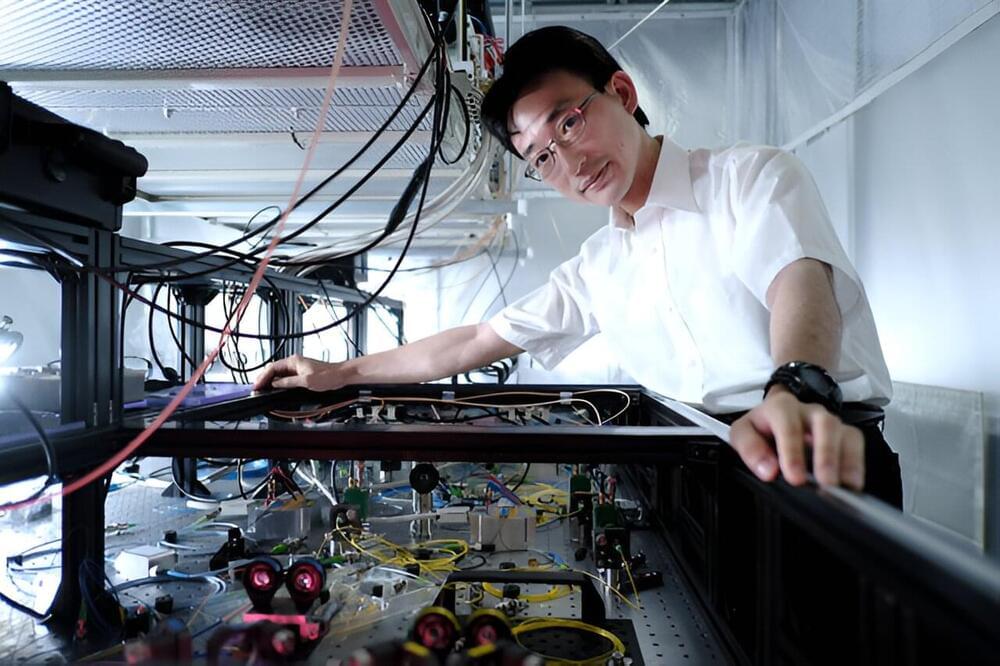


Can machine learning predict chaos? This paper performs a large-scale comparison of modern forecasting methods on a giant dataset of 135 chaotic systems.
Chaos and unpredictability are traditionally synonymous, yet large-scale machine-learning methods recently have demonstrated a surprising ability to forecast chaotic systems well beyond typical predictability horizons. However, recent works disagree on whether specialized methods grounded in dynamical systems theory, such as reservoir computers or neural ordinary differential equations, outperform general-purpose large-scale learning methods such as transformers or recurrent neural networks. These prior studies perform comparisons on few individually chosen chaotic systems, thereby precluding robust quantification of how statistical modeling choices and dynamical invariants of different chaotic systems jointly determine empirical predictability.
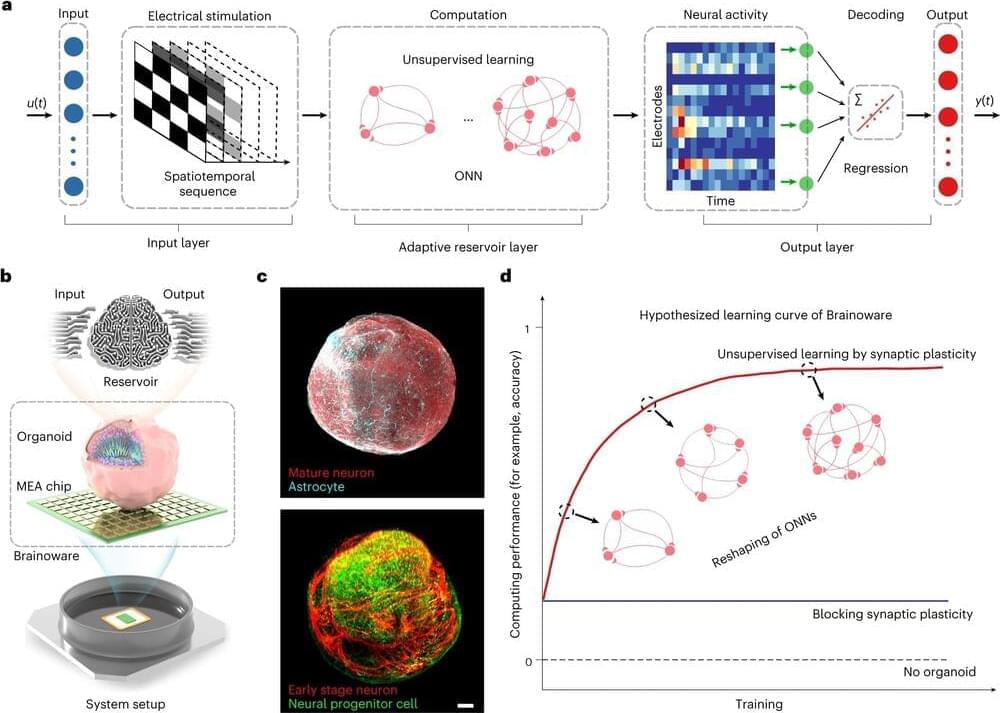
The fusion of biological principles with technological innovation has resulted in significant advancements in artificial intelligence (AI) through the development of Brainoware. Developed by researchers at Indiana University, Bloomington, this innovative system leverages clusters of lab-raised brain cells to achieve elementary speech recognition and solve mathematical problems.
The crux of this technological leap lies in the cultivation of specialized stem cells that mature into neurons—the fundamental units of the brain. While a typical human brain comprises a staggering 86 billion neurons interconnected extensively, the team managed to engineer a minute organoid, merely a nanometer wide. This tiny but powerful structure was connected to a circuit board through an array of electrodes, allowing machine-learning algorithms to decode responses from the brain tissue.
Termed Brainoware, this amalgamation of biological neurons and computational circuits exhibited remarkable capabilities after a brief training period. It was discerned between eight subjects based on their diverse pronunciation of vowels with an accuracy rate of 78%. Impressively, Brainoware outperformed artificial networks in predicting the Henon map, a complex mathematical construct within chaotic dynamics.
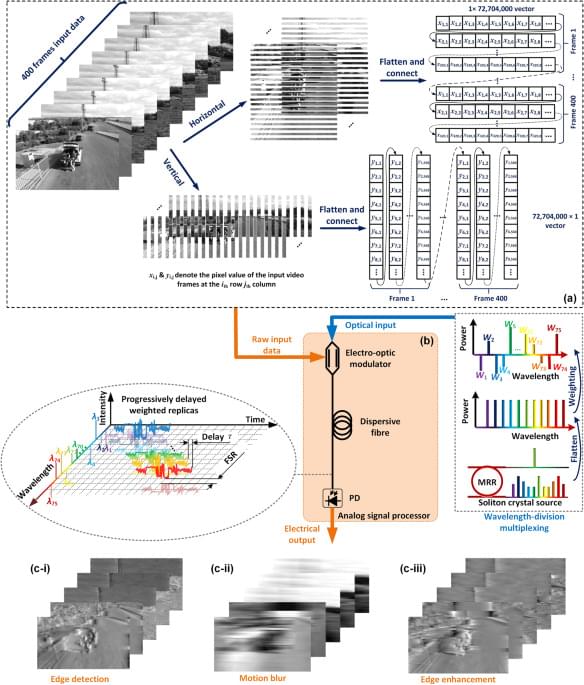
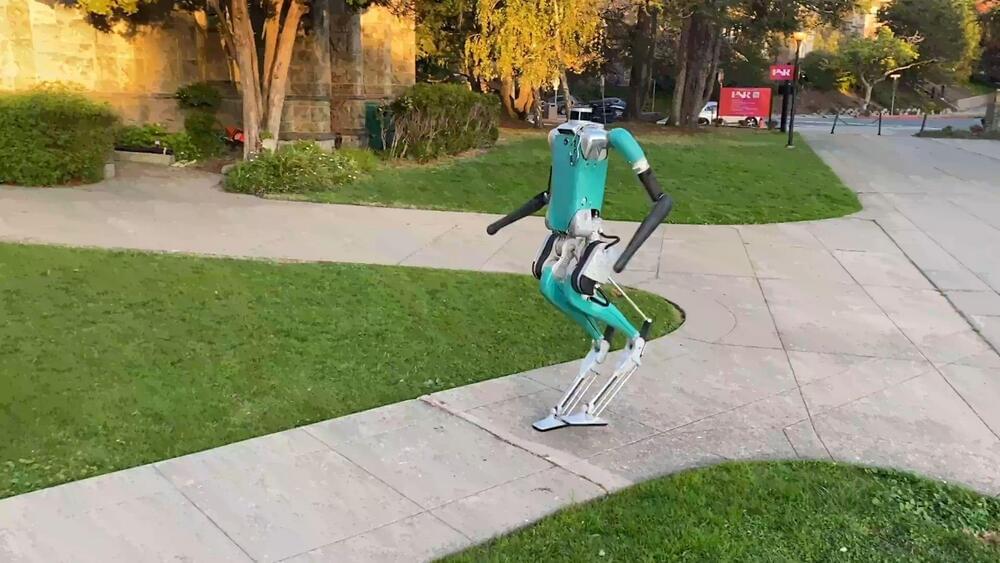
The robot is blind and cannot see its environment but can continue to balance and walk, even if an object is hurled at it.
UC researchers Ilija Radosavovic and Bike Zhang wondered if “reinforcement learning,” a concept made popular by large language models (LLMs) last year, could also teach the robot how to adapt to changing needs. To test their theory, the duo started with one of the most basic functions humans can perform — walking.
Transformer model for learning
The researchers started in the simulation world, running billions of scenarios in Isaac Gym, a high-performance GPU-based physics simulation environment. The algorithm in the simulator rewarded actions that mimicked human-like walking while punishing the ones that didn’t. Once the simulation perfected the task, it was transferred to a real-world humanoid bot that did not require further fine-tuning.
“I believe we have found one of the brain’s prototypes for building sequences” says Professor Edvard Moser.
Scientists at NTNU’s Kavli Institute for Systems Neuroscience in Norway have discovered a pattern of activity in the brain that serves as a template for building sequential experiences.
“I believe we have found one of the brain’s prototypes for building sequences,” says Professor Edvard Moser. He describes the activity pattern as “a fundamental algorithm that is intrinsic to the brain and independent of experience.”
The breakthrough discovery was published in Nature.

This story originally appeared in The Algorithm, our weekly newsletter on AI. To get stories like this in your inbox first, sign up here.
This has been one of the craziest years in AI in a long time: endless product launches, boardroom coups, intense policy debates about AI doom, and a race to find the next big thing. But we’ve also seen concrete tools and policies aimed at getting the AI sector to behave more responsibly and hold powerful players accountable. That gives me a lot of hope for the future of AI.

Quantum computers could become more useful now researchers at Google have designed an algorithm that can translate complex physical problems into the language of quantum physics.
By Alex Wilkins
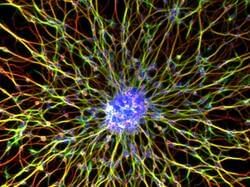
Scientists have fused human brain tissue to a computer chip, creating a mini cyborg in a petri dish that can perform math equations and recognize speech.
Dubbed Brainoware, the system consists of brain cells artificially grown from human stem cells, which have been fostered to develop into a brain-like tissue. This mini-brain organoid is then hooked up to traditional hardware where it acts as a physical reservoir that can capture and remember the information it receives from the computer inputs.
The researchers wanted to explore the idea of exploiting the efficiency of the human brain’s architecture to supercharge computational hardware. The rise of artificial intelligence (AI) has massively increased the demand for computing power, but it’s somewhat limited by the energy efficiency and performance of the standard silicon chips.
In this episode, my guest is Dr. Robert Lustig, M.D., neuroendocrinologist, professor of pediatrics at the University of California, San Francisco (UCSF), and a bestselling author on nutrition and metabolic health. We address the “calories in-calories out” (CICO) model of metabolism and weight regulation and how specific macronutrients (protein, fat, carbohydrates), fiber and sugar can modify the CICO equation. We cover how different types of sugars, specifically fructose, sugars found in liquid form, taste intensity, and other factors impact insulin levels, liver, kidney, and metabolic health. We also explore how fructose in non-fruit sources can be addictive (acting similarly to drugs of abuse) and how sugar alters brain circuits related to food cravings and satisfaction. We discuss the role of sugar in childhood and adult obesity, gut health and disease and mental health. We also discuss how the food industry uses refined sugars to create pseudo foods and what these do to the brain and body. This episode is replete with actionable information about sugar and metabolism, weight control, brain health and body composition. It ought to be of interest to anyone seeking to understand how specific food choices impact the immediate and long-term health of the brain and body. For the show notes, including referenced articles and additional resources, please visit https://www.hubermanlab.com/episode/dr-robert-lustig-how-sug…our-health Thank you to our sponsors AG1: https://drinkag1.com/huberman Eight Sleep: https://eightsleep.com/huberman Levels: https://levels.link/huberman AeroPress: https://aeropress.com/huberman LMNT: https://drinklmnt.com/huberman Momentous: https://livemomentous.com/huberman Huberman Lab Social & Website Instagram: https://www.instagram.com/hubermanlab Twitter: https://twitter.com/hubermanlab Facebook: https://www.facebook.com/hubermanlab TikTok: https://www.tiktok.com/@hubermanlab LinkedIn: https://www.linkedin.com/in/andrew-huberman Website: https://www.hubermanlab.com Newsletter: https://www.hubermanlab.com/newsletter Dr. Robert Lustig Website: https://robertlustig.com Books: https://robertlustig.com/books Publications: https://robertlustig.com/publications Blog: https://robertlustig.com/blog UCSF academic profile: https://profiles.ucsf.edu/robert.lustig Metabolical (book): https://amzn.to/48mNhOE SugarScience: http://sugarscience.ucsf.edu X: https://twitter.com/RobertLustigMD Facebook: https://www.facebook.com/DrRobertLustig LinkedIn: https://www.linkedin.com/in/robert-lustig-8904245 Instagram: https://www.instagram.com/robertlustigmd Threads: https://www.threads.net/@robertlustigmd Timestamps 00:00:00 Dr. Robert Lustig 00:02:02 Sponsors: Eight Sleep, Levels & AeroPress 00:06:41 Calories, Fiber 00:12:15 Calories, Protein & Fat, Trans Fats 00:18:23 Carbohydrate Calories, Glucose vs. Fructose, Fruit, Processed Foods 00:26:43 Fructose, Mitochondria & Metabolic Health 00:31:54 Trans Fats; Food Industry & Language 00:35:33 Sponsor: AG1 00:37:04 Glucose, Insulin, Muscle 00:42:31 Insulin & Cell Growth vs. Burn; Oxygen & Cell Growth, Cancer 00:51:14 Glucose vs. Fructose, Uric Acid; “Leaky Gut” & Inflammation 01:00:51 Supporting the Gut Microbiome, Fasting 01:04:13 Highly Processed Foods, Sugars; “Price Elasticity” & Food Industry 01:10:28 Sponsor: LMNT 01:11:51 Processed Foods & Added Sugars 01:14:19 Sugars, High-Fructose Corn Syrup 01:18:16 Food Industry & Added Sugar, Personal Responsibility, Public Health 01:30:04 Obesity, Diabetes, “Hidden” Sugars 01:34:57 Diet, Insulin & Sugars 01:38:20 Tools: NOVA Food Classification; Perfact Recommendations 01:43:46 Meat & Metabolic Health, Eggs, Fish 01:46:44 Sources of Omega-3s; Vitamin C & Vitamin D 01:52:37 Tool: Reduce Inflammation; Sugars, Cortisol & Stress 01:59:12 Food Industry, Big Pharma & Government; Statins 02:06:55 Public Health Shifts, Rebellion, Sugar Tax, Hidden Sugars 02:12:58 Real Food Movement, Public School Lunches & Processed Foods 02:18:25 3 Fat Types & Metabolic Health; Sugar, Alcohol & Stress 02:26:40 Artificial & Non-Caloric Sweeteners, Insulin & Weight Gain 02:34:32 Re-Engineering Ultra-Processed Food 02:38:45 Sugar & Addiction, Caffeine 02:45:18 GLP-1, Semaglutide (Ozempic, Wegovy, Tirzepatide), Risks; Big Pharma 02:57:39 Obesity & Sugar Addiction; Brain Re-Mapping, Insulin & Leptin Resistance 03:03:31 Fructose & Addiction, Personal Responsibility & Tobacco 03:07:27 Food Choices: Fruit, Rice, Tomato Sauce, Bread, Meats, Fermented Foods 03:12:54 Intermittent Fasting, Diet Soda, Food Combinations, Fiber, Food Labels 03:19:14 Improving Health, Advocacy, School Lunches, Hidden Sugars 03:26:55 Zero-Cost Support, Spotify & Apple Reviews, YouTube Feedback, Sponsors, Momentous, Social Media, Neural Network Newsletter #HubermanLab #Science #Nutrition Title Card Photo Credit: Mike Blabac — https://www.blabacphoto.com Disclaimer: https://hubermanlab.com/disclaimer